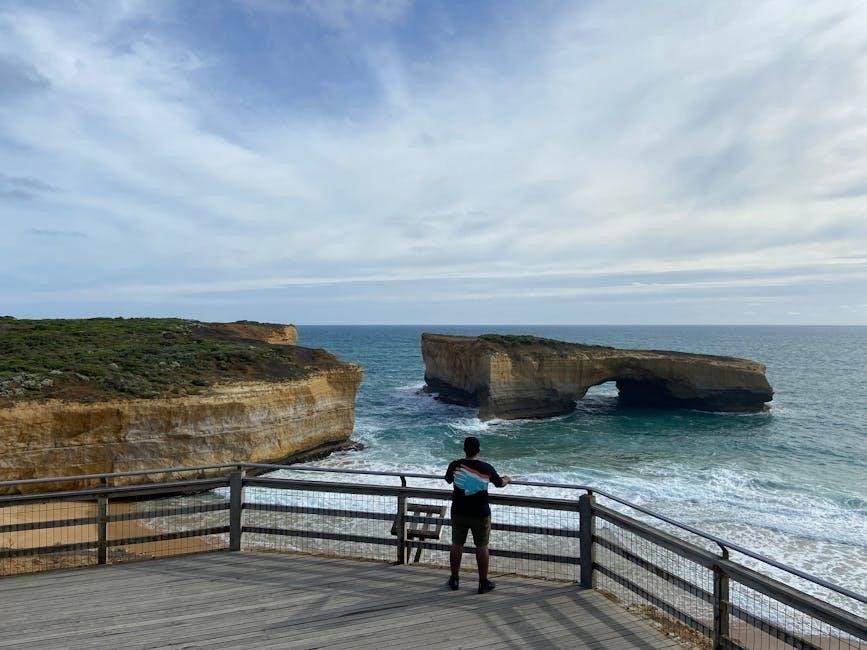Understanding pool fence regulations in Victoria is crucial for ensuring safety and compliance with legal standards. These rules aim to prevent accidents and protect lives, especially for children. Homeowners must adhere to specific requirements for fence height, materials, and gate functionality to avoid penalties and ensure compliance with safety barriers. Regular inspections and certifications are mandatory to maintain safety standards, making it essential to stay informed about the latest regulations.
1.1 Importance of Pool Safety
Pool safety is paramount to prevent accidents and save lives, particularly for children. In Victoria, pool-related drownings highlight the necessity of strict safety measures. Proper fencing and gates are legally required to ensure pool areas are secure and inaccessible to toddlers. These regulations aim to minimize risks and create a safe environment for families. Compliance with pool safety standards not only protects lives but also avoids legal penalties. Regular inspections and certifications ensure barriers remain effective over time. By adhering to these guidelines, homeowners contribute to a safer community while fulfilling their legal obligations. Pool safety is a collective responsibility, and understanding its importance is the first step toward preventing tragedies and ensuring compliance with Victorian regulations.
1.2 Overview of Regulations
Victoria’s pool fence regulations are comprehensive and designed to ensure maximum safety. The rules mandate that all pools capable of holding 30cm or more of water must be enclosed by a barrier. Fences must be at least 1.2 meters high, with gates that are self-closing and self-latching. Boundary fences used as pool barriers must be 1.8 meters tall. Materials must be durable, such as aluminum, steel, or glass, to ensure longevity. The gap between the fence and the ground cannot exceed 100mm, and gates must swing outward away from the pool area. These regulations apply to both new and existing pools, with specific checklists for those installed before 8 April 1991. Compliance is enforced through permits and inspections, ensuring a safe environment for families and communities. Adhering to these standards is essential for legal compliance and preventing accidents. Regular updates to the regulations help maintain the highest safety levels.
1.3 Purpose of the Guide
This guide provides a detailed overview of Victoria’s pool fence regulations to help homeowners and pool owners understand and comply with the legal requirements. Its purpose is to ensure that all safety standards are met, reducing the risk of accidents, particularly for children. The guide outlines the necessary steps for obtaining permits, constructing barriers, and passing inspections. It also highlights the importance of regular maintenance and updates to stay compliant with evolving regulations. By following this guide, individuals can avoid penalties and legal actions while creating a secure and enjoyable pool environment. The information is presented clearly to assist in making informed decisions and ensuring that all safety measures are implemented effectively. This comprehensive resource is essential for anyone looking to install or maintain a pool fence in Victoria. Proper compliance ensures a safe and legal pool area for everyone to enjoy.
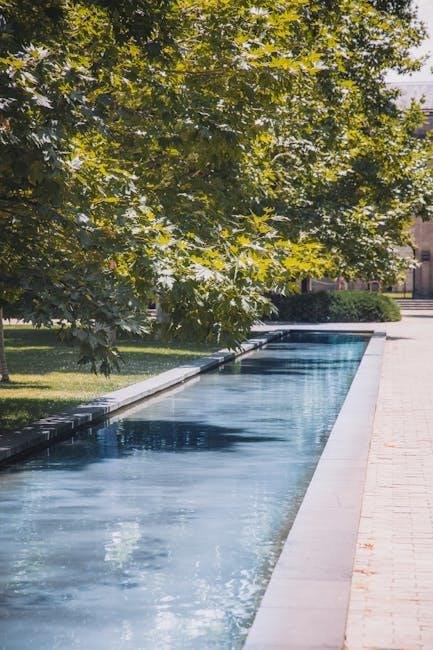
Legal Height Requirements for Pool Fences
In Victoria, pool fences must be at least 1200mm high, measured from the ground to the top of the barrier, to ensure compliance with safety regulations and prevent accidents.

2.1 Minimum Height for Pool Fences
In Victoria, the minimum height requirement for pool fences is strictly enforced to ensure safety. Pool fences must be at least 1200mm high, measured from the finished ground level to the top of the barrier. This regulation applies to all swimming pools and spas capable of holding water to a depth of 30cm or more. The height requirement is designed to prevent young children from accessing the pool area unsupervised, reducing the risk of accidents and drowning. The measurement must be taken vertically from the ground to the highest point of the fence, ensuring no gaps or climbable features compromise the barrier’s effectiveness. Compliance with this height standard is critical for passing inspections and maintaining legal compliance.
2.2 Height for Boundary Fences
Boundary fences used as pool barriers in Victoria must meet specific height requirements to ensure safety. These fences must be at least 1800mm tall, which is 600mm higher than the minimum height for non-boundary pool fences. This increased height is mandated to prevent children from climbing over the fence and accessing the pool area unsupervised. The measurement is taken from the finished ground level on both sides of the fence, ensuring consistency and compliance. If the boundary fence is shared with a neighbor, both parties are responsible for ensuring the height requirement is met. This regulation emphasizes the importance of a secure pool barrier, especially when the fence forms part of the property’s boundary, to minimize potential risks and ensure a safe environment for children.
2.3 Measuring Fence Height
Measuring the height of a pool fence is a critical step in ensuring compliance with Victorian regulations. The height must be measured from the finished ground level on both sides of the fence to the top of the barrier. For non-boundary fences, the minimum height is 1200mm, while boundary fences must be at least 1800mm. It is essential to ensure consistency in measurement across the entire fence length. The gap between the bottom of the fence and the ground must not exceed 100mm to prevent children from crawling underneath. Measurements should be taken during installation and inspected regularly to maintain compliance. Accurate measurements are vital to avoid penalties and ensure the fence provides a safe barrier around the pool area, protecting children from potential accidents.
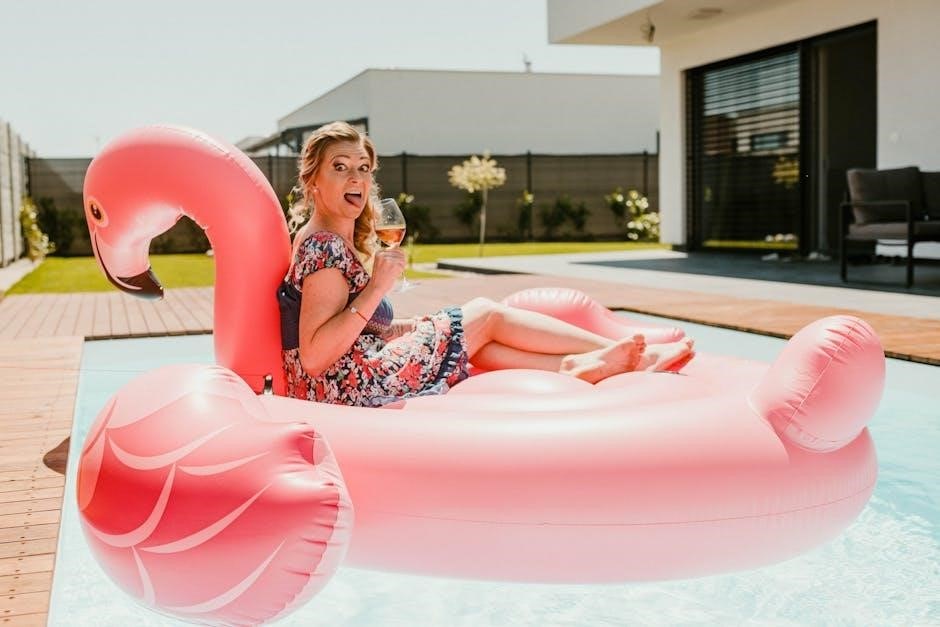
Compliance and Certification
Compliance with pool fence regulations in Victoria requires a building permit and certification. The certification process involves inspections to ensure all safety standards are met. Regular inspections are mandatory to maintain compliance and ensure the pool area remains safe for everyone.
3.1 Building Permits for Pool Fences
Obtaining a building permit is essential for installing or modifying a pool fence in Victoria. This ensures compliance with safety regulations and local building codes. Homeowners must submit detailed plans to their local council, demonstrating that the fence meets all legal requirements, including height, material, and gate functionality standards. Inspections are typically required to verify compliance before the permit is granted. Failure to obtain a permit or meet the specified standards can result in legal penalties and compliance issues. The permit process ensures that safety barriers are effectively designed and constructed to protect children and prevent accidents, aligning with Victoria’s strict pool safety laws.
3.2 Role of Local Councils
Local councils in Victoria play a critical role in enforcing pool fence regulations. They are responsible for issuing building permits, conducting inspections, and ensuring compliance with safety standards. Councils review plans to verify that proposed fences meet legal requirements, including height, material, and gate functionality. They also perform routine inspections to check for compliance, especially for pools and spas. If a fence does not meet the standards, the council may issue notices or penalties. Additionally, councils provide guidance and resources to homeowners, helping them understand and adhere to regulations. Their oversight ensures that pool areas remain safe, particularly for children, and that all safety barriers are maintained properly. Regular communication with local councils is essential for homeowners to stay informed about updates to regulations and requirements.
3.3 Certification Process
The certification process for pool fences in Victoria ensures compliance with safety standards. Homeowners must engage a registered Building Surveyor to assess the fence and barrier. The surveyor inspects the fence height, gate functionality, and overall structure to verify adherence to regulations. If compliant, a Certificate of Pool Barrier Compliance is issued, confirming the fence meets legal requirements. This certificate is essential for legal compliance and may be required when selling a property. The process involves submitting plans, undergoing inspections, and addressing any issues identified by the surveyor. Proper documentation and approval are critical to avoid penalties and ensure the safety of the pool area. Regular inspections and certifications help maintain compliance over time.
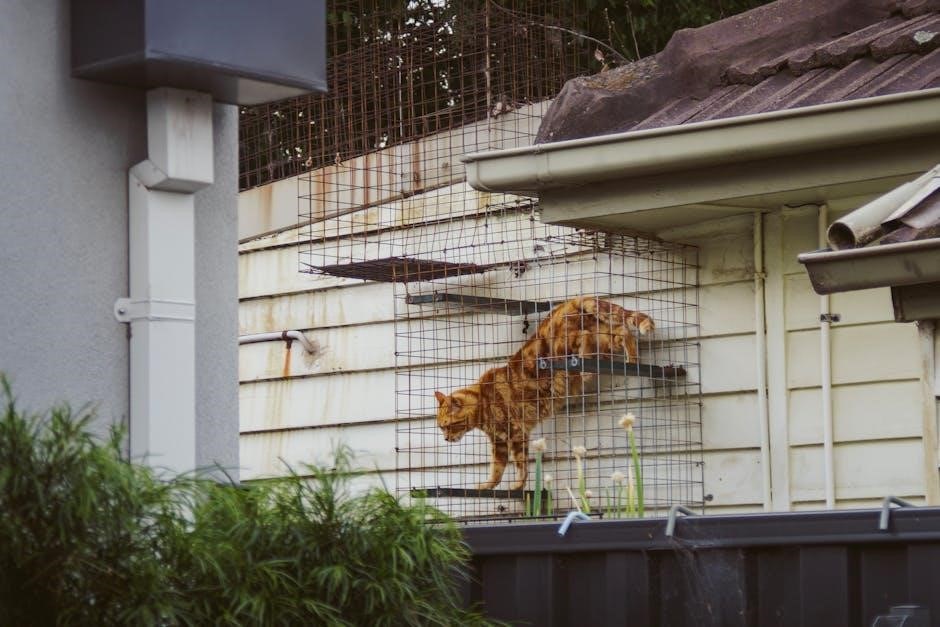
Gate Requirements and Safety Standards
Gates must be self-closing and self-latching, swinging outward away from the pool. They must meet specific height and material standards to ensure safety, especially for children, and prevent unauthorized access.
4.1 Self-Closing and Self-Latching Gates
In Victoria, pool gates must be self-closing and self-latching to ensure maximum safety. These mechanisms prevent unauthorized access, especially by children, by automatically securing the gate when closed.
The gate must swing outward away from the pool area to avoid inward openings that could trap someone. The latching device must be positioned at least 1.5 meters above ground level to prevent children from reaching it.
Regular inspections are required to ensure these features function correctly. Failure to comply with self-closing and self-latching requirements can result in penalties, emphasizing the importance of proper installation and maintenance.
4.2 Gate Height and Materials
Pool gates in Victoria must meet specific height and material requirements to ensure safety and durability. Gates must be at least 1.2 meters high, matching the minimum height of pool fences, to prevent climbing over.
Materials used for gates must be durable and weather-resistant, such as aluminum, steel, or glass, ensuring longevity and strength. The gate design should avoid climbable features, such as horizontal rails, to minimize safety risks.
Proper installation and maintenance of gates are critical to uphold safety standards. Non-compliant gates may lead to penalties, making it essential for homeowners to adhere to these regulations strictly.
4.3 Gate Positioning and Direction
Pool gates in Victoria must be positioned to ensure maximum safety and compliance with regulations. Gates must swing outwards away from the pool area, preventing accidental entry when opened. Proper positioning is critical to avoid creating gaps or hazards near the pool. The gate should be installed in a way that minimizes the risk of children accessing the pool area unsupervised. Additionally, the gate’s hinge placement and direction must align with the fence design to maintain structural integrity. Compliance with these requirements ensures the gate functions correctly and adheres to Victoria’s pool safety standards. Proper installation and maintenance are essential to prevent safety risks and legal penalties. Homeowners must ensure gates are correctly positioned to uphold safety and meet regulatory expectations.
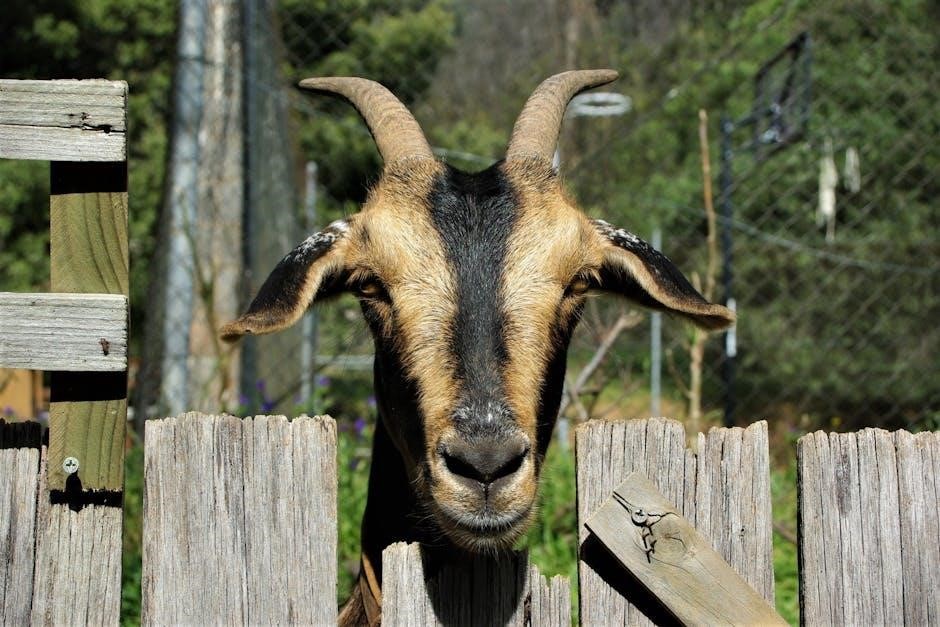
Boundary Fences as Pool Barriers
Boundary fences in Victoria can serve as pool barriers but must meet specific height and safety requirements. They must be at least 1800 mm tall to ensure compliance with regulations and provide adequate protection, especially for children, around pool areas. Proper maintenance and inspection are necessary to uphold safety standards and prevent potential hazards.
5;1 Using Existing Fences as Barriers
Existing boundary fences in Victoria can be used as pool barriers if they meet specific safety and height requirements. These fences must be at least 1800 mm tall, ensuring they act as an effective barrier to prevent unauthorized access to the pool area. The fence must be constructed from durable materials, such as timber, metal, or glass, and should have no gaps or openings that exceed 100 mm. Additionally, the fence must be properly maintained to avoid any damage or wear that could compromise its effectiveness. If the existing fence does not meet these standards, modifications may be required to ensure compliance with Victorian pool safety regulations. Homeowners are encouraged to consult local authorities or certified professionals to assess and certify their boundary fences for pool barrier use; Regular inspections are essential to maintain compliance and ensure ongoing safety.
5.2 Height and Material Requirements
In Victoria, boundary fences used as pool barriers must meet specific height and material requirements. The fence must be at least 1800 mm tall, measured from the ground to the top, to ensure it acts as an effective safety barrier. Materials must be durable and long-lasting, such as aluminum, steel, or glass, to withstand weather conditions and regular use. The fence should have no gaps or openings larger than 100 mm to prevent children from slipping through. Additionally, the bottom gap between the fence and the ground must not exceed 100 mm to avoid any potential safety hazards. These requirements ensure the fence provides a secure and reliable barrier around the pool area, reducing the risk of accidents and complying with Victorian safety standards.
5.3 Maintenance of Boundary Fences
Regular maintenance of boundary fences used as pool barriers is essential to ensure ongoing safety and compliance with Victorian regulations. Homeowners must inspect the fence periodically for damage, wear, or deterioration, addressing any issues promptly. Repairs should be made immediately if sections are broken, loose, or show signs of instability. Vegetation growth near the fence must be controlled to avoid interference with the barrier’s integrity. Additionally, any modifications to the fence must comply with existing regulations to maintain its effectiveness as a safety barrier. Failure to maintain the fence properly can lead to non-compliance and potential penalties. Regular upkeep ensures the fence remains a reliable safeguard, protecting children and preventing accidents.

Mandatory Inspections and Compliance Checks
Mandatory inspections ensure pool fences meet safety standards, preventing accidents. Local councils or certified inspectors conduct these checks, verifying compliance with regulations. Non-compliance can lead to penalties.
6.1 Frequency of Inspections

In Victoria, pool fence inspections are mandatory and typically occur at specific intervals. For new pools, an initial inspection is required upon installation to ensure compliance with safety standards. Existing pools must undergo periodic inspections, often every four years, to verify ongoing compliance. Additionally, inspections may be triggered by changes to the pool area, such as renovations or new fencing installations. Local councils or certified inspectors conduct these checks to ensure that all safety barriers, gates, and fences meet the prescribed regulations. Regular inspections help identify and address potential hazards, ensuring a safe environment for children and preventing accidents. Homeowners are responsible for scheduling these inspections and maintaining compliance to avoid penalties. The frequency of inspections may vary depending on the age of the pool and any modifications made to the fencing or surrounding area.
6.2 What Inspectors Look For
During inspections, pool fence inspectors in Victoria check for compliance with safety regulations. They verify that the fence height meets the minimum requirement of 1.2 meters and that gates are self-closing and self-latching. Inspectors also ensure there are no gaps exceeding 100mm at the bottom of the fence and that all materials used are durable and secure. They examine the overall structure for any damage or weaknesses that could compromise safety. Additionally, inspectors check that gates swing outward away from the pool and that there are no climbable objects nearby, such as trees or furniture, that could allow children to bypass the barrier. Non-compliance with any of these criteria can result in penalties, making it essential for homeowners to address any issues promptly to pass the inspection.
6.3 Consequences of Non-Compliance
Non-compliance with Victoria’s pool fence regulations can result in significant penalties, including fines and legal actions. Homeowners who fail to meet safety standards may face financial penalties, with fines escalating for repeat offenses. Inspectors may issue notices requiring immediate corrective actions, and persistent non-compliance can lead to court-ordered resolutions. The primary goal of these regulations is to prevent accidents, particularly involving children, by ensuring fences and gates are secure and meet legal requirements. Local councils enforce these rules rigorously, and property owners are held accountable for maintaining safe pool barriers. Ignoring compliance can not only lead to financial repercussions but also jeopardize the safety of those around the pool, making it crucial to adhere to all specified standards and address any issues promptly.
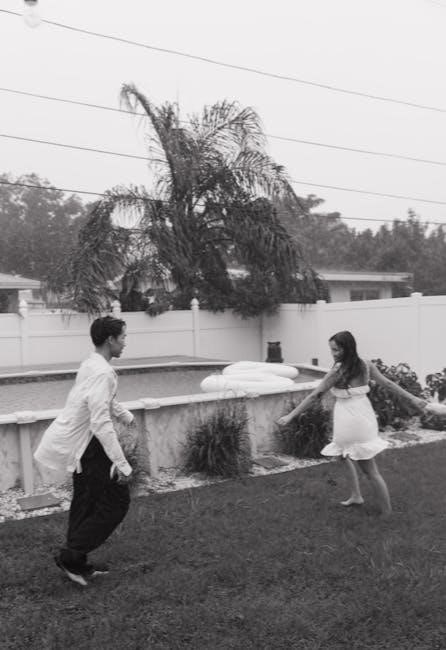
Penalties for Non-Compliance
Non-compliance with Victoria’s pool fence regulations can result in significant fines and legal actions. Penalties escalate for repeat offenses, emphasizing the importance of adhering to safety standards to avoid repercussions.
7.1 Fines and Legal Actions
Homeowners in Victoria who fail to comply with pool fence regulations face substantial fines, which can escalate depending on the severity of non-compliance. Legal actions may also be taken, including court proceedings, to ensure adherence to safety standards. These penalties are designed to emphasize the importance of maintaining a safe pool environment, particularly to protect children from potential drowning hazards. Repeat offenses can lead to higher fines and more severe legal consequences, underscoring the necessity of proper fence installation and maintenance. Authorities strictly enforce these regulations, making it essential for pool owners to stay informed and proactive in meeting all legal requirements.
7.2 Repeat Offenses and Escalating Penalties
Repeat offenses for non-compliance with pool fence regulations in Victoria result in escalating penalties, reflecting the severity of ongoing negligence. Homeowners who fail to address previous violations face increased fines, with each subsequent offense leading to higher monetary penalties. Legal actions may also intensify, potentially involving court proceedings and more stringent enforcement measures. The goal of these escalating penalties is to ensure compliance and prioritize pool safety, particularly to protect children from preventable accidents. Authorities take repeat violations seriously, as they indicate a disregard for critical safety standards. Pool owners are urged to address any issues promptly to avoid the financial and legal consequences of repeated non-compliance.
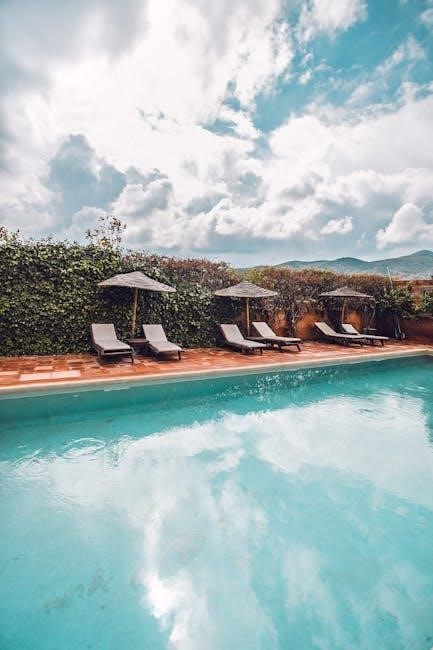
7.3 How to Avoid Penalties
To avoid penalties related to pool fence regulations in Victoria, homeowners must ensure full compliance with all safety standards. Regular inspections and maintenance of fences and gates are essential to identify and address potential issues before they lead to violations. Consulting with local councils or certified professionals can provide clarity on specific requirements, ensuring that all installations meet legal criteria. Additionally, staying informed about updates to regulations and promptly making necessary adjustments can prevent penalties. Proactive measures, such as installing self-closing gates and ensuring proper fence heights, demonstrate a commitment to safety and compliance. By taking these steps, pool owners can safeguard their families and avoid legal consequences, maintaining a secure and enjoyable pool environment.
